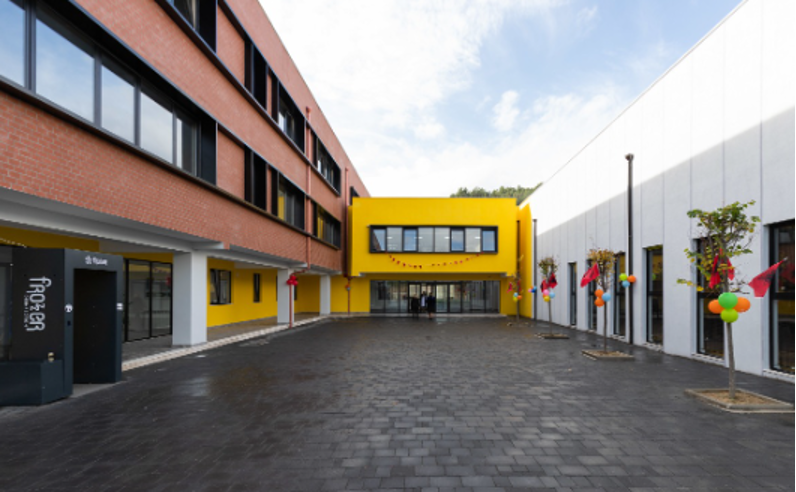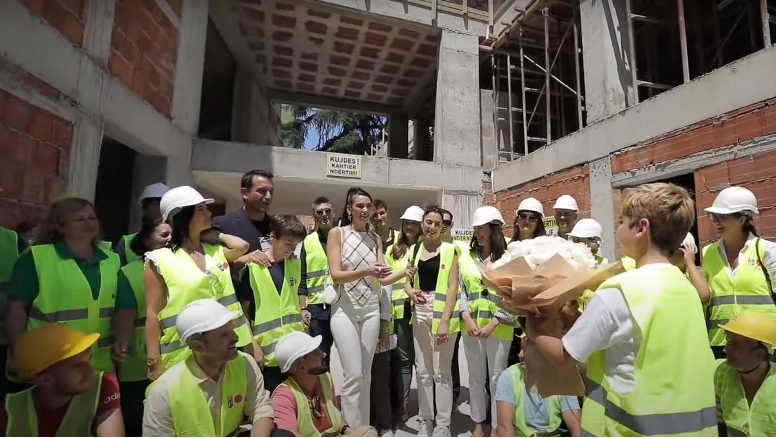
Alumni Spotlight; M.A. 2020
Akil Sokoli came to Boston University’s Preservation Studies as an international student from Tirana, Albania. He now works as Project Coordinator/Manager in the Municipality of Tirana, Albania.
What did you study before coming to Boston University and how did your work in Albania spark your interest in Preservation Studies?
I studied architecture and urban planning, and then worked for the city hall of Tirana in the urban planning department. At that time, we were involved in designing the general master plan for the entire city. Tirana is not an old city like the rest of other capital cities in Europe, however its core with buildings from the 20th century, is worth preserving. While working with this general plan for the city, I became interested in preserving some specific neighborhoods, as there was a lot of pressure from real estate companies to demolish historic buildings and redevelop the land with high-rise apartment buildings. The land use plan would determine which areas had to be preserved, create rules and tools for preservation, and opportunities for those people living in the historic areas to benefit from the new developments outside of these areas. At that time, I was very much interested to find the means and mechanisms to protect these historic areas and push the development pressure into the outskirts of the city. This structure for preservation really mirrors the Local Preservation Districts in the United States.
What are examples of preservation initiatives and historic cities in Albania?
Albania has properties inscribed under UNESCO World Heritage, including the historic city centers of Berat and Gjirokastra, as well as archaeological areas such as Butrint in the southern part of the country. In addition, intangible cultural heritage is protected as well, such as the traditional Albanian polyphonic music that is inscribed in the UNESCO’s Representative List of the Intangible Cultural Heritage of Humanity. Recently, a preservation initiative was taken from an independent Albanian scholar to study and protect a historic dress called “Xhubleta”, which resisted the centuries and is still being worn today by women in the northern part of the country. Such study was backed up from many organizations as well as the central and local government and advocated for the Xhubleta to be enlisted in the UNESCO’s list of intangible heritage.
Circling back to your studying in the United States, how did you finally decide on BU?
I wanted to continue my education in museum studies & preservation, so I applied for a master scholarship at the Albanian American Development Fund. I knew that having a background in museum studies would be important, because there was an urge to build more museums throughout Albania and protect historic buildings. Among many cities in the USA I considered Boston as an ideal city to study preservation, not only because it is one of the oldest cities in the USA, but because I was sure that the study program would be tailored to explain all the city’s efforts to preserve its historic heritage
To study at Boston University, I received a scholarship from The Master’s and Internship Program (MIP) that was established in 2016 by the Albanian – American Development Foundation (AADF).
While in the Preservation Studies program, what was your concentration and what classes did you study here?
Museum Practice was my concentration within the Preservation Studies Program; however I also took many other courses related to tourism and management at the Metropolitan College. In terms of my favorite classes, I really connected with both Adaptive Reuse and Global Heritage Conservation courses, because they had a more practical approach towards preservation. I enjoyed the museum courses as well, especially those lectures about interpreting hidden stories in museums, I found them eye opening. What are the narratives of the museum telling us, and why they have been interpreted like that? What are museums showing us and hiding from us? These questions made me understand how the history can be rewritten and interpreted in order to be more inclusive to all communities who played a role in their society.
What is it from your coursework that resonates in your work now?
While at BU I took a Project Management course and a Grant Seeking course, both were incredibly helpful in my current work, because preservation costs money and the projects are often complicated and require many human resources, time and management of activities. Currently, I am involved in project management, fund raising and writing proposals for foundations & banks to finance capital projects.
My BU affiliated internship at the Metropolitan Waterworks Museum in Brookline, MA played a significant role to my museal training and vice versa, my museum courses were incredibly valuable for that role. In fact, my work with the Metropolitan Waterworks Museum has turned into an ongoing consulting position which I perform remotely from Albania.
What have you been doing since you graduated from BU?
Since my graduation I started working for the Municipality of Tirana, Albania in the Department of Foreign Investments Management as a Project Coordinator/Manager for the construction of public buildings and infrastructures. Our projects are funded by foreign sources such as international banks, foundation and development funds. The scope of my work is managing the project cycle, from the initial phase of project proposal writing to the completion and handing over the projects to the administration authorities. My current duties and responsibilities cover all parts of project management such as developing project proposals and grant seeking or loans from international donors; procurement of contractors and contracting the companies; supervision of projects; and project finalization including preparations for the public use of the sites.
What are some of the projects you have worked on?
I have been involved in the construction of social and affordable housing for vulnerable communities, the construction of elementary schools, high schools and kindergartens, the rehabilitation of the water supply network for the city of Tirana, and the rehabilitation of landscapes and parks. Some of the foreign sources that we are engaged with include the European Investment Bank, the European Bank for Reconstruction and Development, the World Bank, the United Nations Development Program (UNDP), and several cooperation or development funds in European countries.


What do you wish would change in the Albanian environment that would make it more amenable to preservation work?
I wish the country will increase its GDP and be more financially sound, because preservation is a luxury. The more money the country has, the more programs it will assign to preservation. The more money you have, the more likely you are to want your way of life to be preserved. The country should implement more initiatives towards preservation, such as tax credits, construction bonuses and air rights for people who are threatened from the demolition pressures. I also feel that Albania needs more grassroot organizations whose missions are the protection of historical values in the country. Currently, preservation in Albania has a very top-down approach – it is the central government that deals with monuments, while the ordinary people are not very much involved in preserving their own environment.

What suggestions do you have for strengthening preservation in Albania?
Since the central government is the only one entity to be responsible in preserving buildings and monuments and designating historic sites, I suggest that it should be more decentralized and delegate some of its authorities to local governments. The central government should provide more funds to NGOs so they would implement their own preservation projects and contribute to the overall protection of history in the country. Both central and local government should be stronger in confronting the real estate and construction companies pressures, to prevent the demolition of historic areas or removal of Protected Status from the national preserved parks and sites.
To learn about the program that sponsored Akil’s graduate work at BU, Master’s and Internship Program of the Albanian – American Development Foundation, please see their website.
This Master’s and Internship Program is designed to create education opportunities for talented individuals who show the potential to contribute to the social and economic development of Albania. Since 2016, the Council for International Education Exchange partners with American-Albanian Development Foundation has provided funding for professional internship programs in the United States. In 2018, American Councils for International Education began implementing the graduate fellowship program in the U.S. which is co-funded with the Biberaj Foundation.
After returning to Albania, Akil created a video on YouTube, documenting his experience at BU under the The Master’s and Internship Program (MIP).
Contributors: Akil Sokoli, Kristen Dahlmann, David Lewis and Jan Haenraets
Return to the Alumni menu.